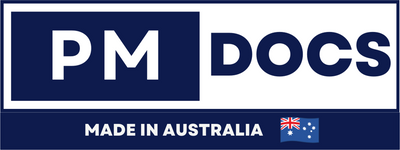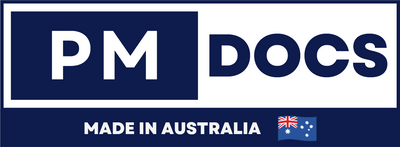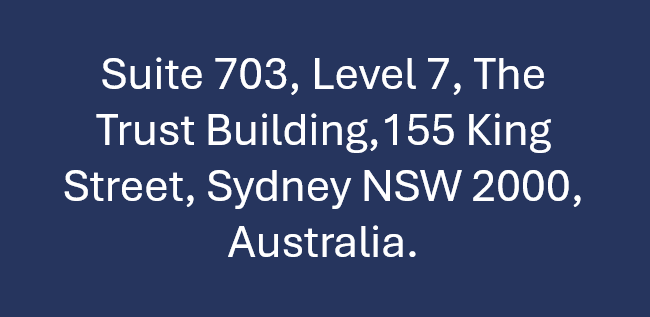How To Get ISO 27001 Certified In Australia (Step-by-Step) ?
Securing Your Digital Future: A Step-by-Step Guide To ISO 27001 Certification in Australia
In today's interconnected world, data is the lifeblood of nearly every Australian business. From customer records to intellectual property, the sheer volume and sensitivity of information demand robust protection. This is where ISO 27001, the international standard for Information Security Management Systems (ISMS), steps in. Achieving ISO 27001 certification isn't just about compliance; it’s a strategic move to build trust, mitigate risks, and demonstrate a steadfast commitment to data security to your clients, partners, and the Australian regulatory bodies.

For Australian businesses, navigating the landscape of data privacy (such as the Notifiable Data Breaches scheme under the Privacy Act) and increasing cyber threats makes ISO 27001 particularly relevant. It provides a structured framework to identify, assess, and manage information security risks effectively.
This comprehensive guide will walk you through the step-by-step process of obtaining ISO 27001 certification in Australia, helping you secure your digital future.
What Is ISO 27001 And Why Is It Essential For Australian Businesses?
ISO 27001 is a globally recognised standard that specifies the requirements for establishing, implementing, maintaining, and continually improving an Information Security Management System (ISMS). An ISMS is a systematic approach to managing sensitive company information so that it remains secure.
Key Components of an ISO 27001 ISMS:
| Component | Description |
|---|---|
| Context of the Organisation | Understanding internal and external issues, interested parties, and the scope of the ISMS. |
| Leadership | Top management commitment, policy, roles, responsibilities, and authorities. |
| Planning | Actions to address risks and opportunities, information security objectives and planning to achieve them. |
| Support | Resources, competence, awareness, communication, and documented information. |
| Operation | Operational planning and control, risk assessment, and risk treatment. |
| Performance Evaluation | Monitoring, measurement, analysis, evaluation, internal audit, and management review. |
| Improvement | Nonconformity and corrective action, continual improvement. |
Why It's Crucial For Australian Businesses?
-
Enhanced Data Protection: Systematically identifies and manages risks to sensitive information.
-
Regulatory Compliance: Helps meet obligations under the Australian Privacy Act, Notifiable Data Breaches scheme, and other sector-specific regulations.
-
Competitive Advantage: Differentiates your business by demonstrating a commitment to security, winning trust from clients and partners.
-
Reduced Cyber Risk: Lowers the likelihood and impact of data breaches and cyber-attacks.
-
Improved Reputation: Builds confidence among stakeholders and strengthens your brand image.
- Operational Efficiency: Standardises security practices, leading to more efficient operations.
Pre-Certification Considerations: Laying The Foundation
Before embarking on the certification journey, consider these foundational elements:
-
Top Management Commitment: Without strong buy-in and active participation from senior leadership, the initiative is likely to falter. They must champion the project, allocate resources, and communicate its importance.
-
Scope Definition: Clearly define what parts of your organisation, processes, and locations will be covered by the ISMS. A well-defined, realistic scope is crucial for managing effort and cost.
- Resource Allocation: Identify dedicated personnel, budget, and timeframes. Consider whether you'll need external consultants to assist with implementation.
The 7 Core Steps To ISO 27001 Certification In Australia
The journey to ISO 27001 certification can be broken down into distinct, logical steps.
Step 1: Planning & Gap Analysis
Your first step is to understand where you currently stand against the requirements of ISO 27001.
-
Conduct a Gap Analysis: A comprehensive assessment of your existing information security controls, policies, and procedures against the ISO 27001 standard. This helps identify strengths and, more importantly, areas requiring improvement. Many Australian businesses opt to engage an experienced consultant for this phase to gain an objective, expert perspective.
-
Define Your ISMS Scope: Based on business needs, regulatory requirements, and risk appetite, formally document the boundaries of your ISMS. What information, assets, and processes will be covered?
- Identify Interested Parties: Determine who has a vested interest in your information security (e.g., customers, regulators, employees, suppliers) and their requirements.
Step 2: ISMS Design & Documentation
This is where you build the blueprint for your information security management system.
-
Risk Assessment: The cornerstone of ISO 27001. Systematically identify information security risks relevant to your scope, analyse their potential impact and likelihood, and evaluate them against your risk acceptance criteria.
-
Risk Treatment Plan (RTP): Based on your risk assessment, develop strategies to treat identified risks. This might involve implementing new controls, transferring risk (e.g., insurance), avoiding risk, or accepting residual risk.
-
Statement of Applicability (SoA): A critical document that lists all ISO 27001 Annex A controls and justifies which ones are applicable to your organisation and, importantly, why others are not.
-
Develop Policies & Procedures: Create or update information security policies, procedures, and guidelines that align with your risk treatment plan and the Annex A controls. This includes access control, incident management, business continuity, supplier security, etc.
- Information Security Objectives: Establish measurable objectives for your ISMS and plan how to achieve them.
Step 3: Implementation & Control Application
With your ISMS designed, it's time to put it into action.
-
Implement Controls: Apply the technical, organisational, and administrative controls detailed in your RTP and SoA. This could involve configuring firewalls, implementing security awareness training, establishing robust backup procedures, or reviewing supplier contracts.
-
Training & Awareness: Educate your employees about their information security responsibilities and the new ISMS processes. Human error is a significant vulnerability, and awareness is key.
- Operationalise Processes: Integrate the new security processes into your day-to-day operations. This ensures that security isn't an afterthought but an integral part of how your business functions.
Step 4: Internal Audits & Management Review
Before facing an external auditor, you need to ensure your ISMS is working effectively.
-
Conduct Internal Audits: Periodically audit your ISMS to verify its conformity to ISO 27001 requirements and your own established policies and procedures. Internal auditors should be independent of the area being audited. This step is crucial for identifying non-conformities and areas for improvement before the external certification body does.
- Management Review: Top management must formally review the performance of the ISMS at planned intervals. This meeting assesses audit results, performance trends, relevant changes, and opportunities for continual improvement.
Step 5: Certification Body Selection
Choosing the right certification body is vital for the credibility of your certification.
-
Research & Select: Look for an accredited certification body operating in Australia. The Joint Accreditation System of Australia and New Zealand (JAS-ANZ) is the primary accreditation body. Ensures the certification body itself meets rigorous standards.
-
Request Quotes: Obtain proposals from several accredited bodies. Compare costs, audit methodologies, and auditor experience.
- Formal Engagement: Appoint your chosen certification body.
Key Criteria For Selecting A Certification Body
| Criteria | Description | Importance |
|---|---|---|
| Accreditation (JAS-ANZ) | Are they accredited by JAS-ANZ or another reputable international accreditation body? | Crucial: Ensures credibility and recognition. |
| Industry Experience | Do they have experience auditing organisations in your sector? | High: Leads to more relevant and insightful audits. |
| Auditor Competence | Are their auditors qualified and experienced in ISO 27001? | High: Impact on audit quality. |
| Cost & Value | Transparent pricing for initial and surveillance audits. What value do they add beyond just certification? | Medium: Balance cost with quality. |
| Reputation | Check references and reviews. | Medium: Indicates reliability and professionalism. |
Step 6: Stage 1 Audit (Document Review)
The certification process begins with a preliminary assessment.
- Purpose: The certification body reviews your documented ISMS (policies, procedures, SoA, Risk Assessment, etc.) to confirm its completeness and readiness for the Stage 2 audit.
- Outcome: The auditor will identify any major gaps or non-conformities that need to be addressed before proceeding. This is an opportunity to fine-tune your documentation.
Step 7: Stage 2 Audit (Certification Audit)
This is the main event – the comprehensive assessment of your ISMS.
- Purpose: The auditor will spend several days (depending on your organisation's size and complexity) on-site or remotely, interviewing staff, observing processes, and examining records to verify that your ISMS is fully implemented, effective, and compliant with ISO 27001.
- Non-Conformities: Any findings will be categorised as major or minor non-conformities. You will be given a timeframe to address and rectify these.
- Recommendation & Certification: Once all non-conformities are satisfactorily addressed, the auditor will recommend your organisation for ISO 27001 certification.
Maintaining Certification: Beyond The Initial Audit
Achieving certification is not the end; it's the beginning of a continual improvement journey.
-
Continual Improvement: Your ISMS must evolve alongside your business and the threat landscape. Regularly review, update, and improve your controls.
-
Surveillance Audits: Typically every 12 months, the certification body will conduct surveillance audits to ensure your ISMS remains effective and compliant.
- Re-certification Audit: Every three years, a full re-certification audit is conducted to renew your ISO 27001 status.
Typical ISO 27001 Certification Timeline (Australia)
The duration can vary significantly based on the size and complexity of your organisation, internal resources, and the scope of the ISMS.
| Phase | Key Activities | Estimated Duration (Small to Medium Enterprise) |
|---|---|---|
| 1. Planning & Design | Gap Analysis, Scope, Risk Assessment, SoA, Policy Development | 3 - 6 Months |
| 2. Implementation | Control Application, Training, Procedure Rollout | 3 - 6 Months |
| 3. Internal Audit & Review | Internal Audits, Management Review, Corrective Actions (if any) | 1 - 2 Months |
| 4. External Audit (Stage 1) | Documentation Review by Certification Body | 1 Week - 1 Month |
| 5. External Audit (Stage 2) | Full Compliance Audit by Certification Body | 1 Week - 1 Month |
| Total Project Duration | From initiation to successful certification recommendation | 6 - 15 Months |
Key Challenges & Tips For Australian Businesses
-
Resource Constraints: SMEs often struggle with limited internal security expertise and budget.
-
Tip: Consider engaging an experienced Australian ISO 27001 consultant to guide you and fill expertise gaps. Focus on a manageable scope initially.
-
Tip: Consider engaging an experienced Australian ISO 27001 consultant to guide you and fill expertise gaps. Focus on a manageable scope initially.
-
Documentation Burden: The standard requires extensive documentation.
-
Tip: Utilise templates for policies and procedures. Focus on practical, usable documents rather than overly complex ones.
-
Tip: Utilise templates for policies and procedures. Focus on practical, usable documents rather than overly complex ones.
-
Employee Buy-in: Getting staff to adopt new security practices can be challenging.
-
Tip: Emphasise the "why" – how it benefits them and the company. Make training engaging and accessible.
-
Tip: Emphasise the "why" – how it benefits them and the company. Make training engaging and accessible.
-
Keeping Up with Threats: The cyber threat landscape evolves rapidly.
- Tip: Implement a continuous improvement cycle. Regularly review your risk assessment and update controls. Stay informed about local and global cyber threats.
Conclusion
Achieving ISO 27001 certification in Australia is a significant undertaking, but the benefits far outweigh the effort. It's a powerful statement to your customers, partners, and regulators that you take information security seriously, mitigating risks, building trust, and future-proofing your business in an increasingly digital world. By following these step-by-step guidelines and committing to the process, your Australian business can confidently secure its digital assets and gain a significant competitive edge.
Ready to embark on your ISO 27001 journey? Start by assessing your current information security posture and defining a clear scope for your ISMS. Your secure future awaits.




